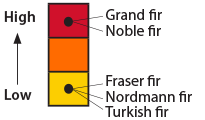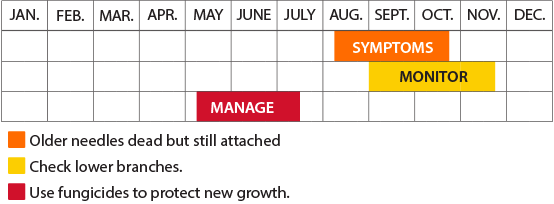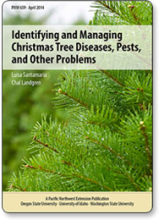Several fungi species: Mycosphaerella spp., Phaeocryptopus nudus, Phyllosticta abietis, Toxosporium spp., Rhizosphaera
- Random to complete browning of older needles, mostly on lower branches
- Symptomatic needles initially remain firmly attached to the branch
- Small, black fungal fruiting bodies present on the undersides of needles
- Limited to true firs
- Older, dense trees
- Areas with poor air circulation
- Environmental stress
- Drought
- Interior needle loss
- Nutrient imbalances
- Observe trees in weedy, crowded sites.
- Observe areas near timber.
- Promote better air circulation within plantations.
- Improve weed control.
- Conduct basal pruning.
- Spray protective fungicides, if needed (multiple years).

- High susceptibility: Grand fir, Noble fir
- Low susceptibility: Fraser fir, Nordmann fir, Turkish fir

- Look for older needles dead but still attached: Mid-August through Mid-October
- Check lower branches: September through Mid-November
- Use fungicides to protect new growth: Mid-May through Mid-July


